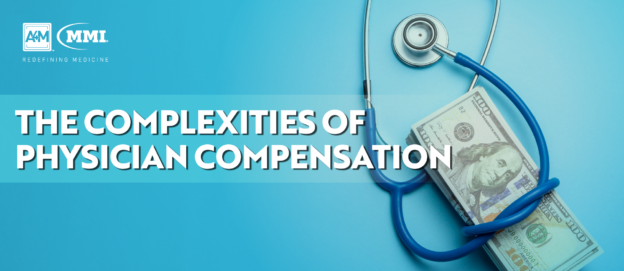Although overall physician salaries continue to rise steadily, the latest research reveals the caveats and complexities of physician compensation, such as a widening gender pay gap and vast differences between specialties. Published annually, the Medscape Physician Compensation Report is the most comprehensive and widely used physician salary survey in the United States, analyzing compensation, hours worked, time spent with patients, and what practitioners find the most rewarding and challenging about their jobs. Over 20,000 U.S. physicians across 30 specialties responded to this year’s online survey, delivering both good and bad news about the state of the healthcare system.
Salaries by Specialty
Overall, physician salaries have seen substantial increases in recent years, with over a 20% growth since 2015 and a current average of $313,000. Most notably, primary care physicians experienced a 21.5% increase from 2015, now earning an average of $237,000. With a salary range of $461,000 to $482,000, the highest-paid physicians were orthopedists, plastic surgeons, and otolaryngologists. On the other hand, public health and preventative medicine specialists and pediatricians reported the lowest earnings – $209,000 and $225,000 respectively.
Growing Gender Pay Gap
Despite national efforts aimed at mitigating the gender pay gap, differences in pay have grown over the past year. In 2019, male physicians earn 25% more than their female counterparts, up from 18% last year and 16% in 2017. On average, female primary care physicians earn $51,000 less per year than male PCPs and even less in specialties. Although women often choose lower-paying specialties, such as pediatrics and primary care, the pay gap remains within those and all other specialties. The average compensation for male specialists was $372,000, and $280,000 for their female counterparts – a significant 33% difference. While the report did find that on average women see patients four hours less per week, the difference does not correlate with the substantial pay gap.
The 2019 Medscape report also discovered compensation disparities among ethnicities with Caucasian physicians earning $16,000 more than mixed-race physicians. Average compensation for Caucasian physicians was $319,000, compared with $303,000 for Hispanic/Latino physicians, $300,000 for Asian physicians, and $281,000 for African American/Black physicians.
Burden of Administrative Tasks
The report’s findings support the startling increase of administrative tasks over recent years that has been burdening physicians and contributing to burnout. Compared to 1-4 hours of paperwork weekly reported by the majority of physicians in 2012, 75% of clinicians now cite over 10 and up to 20 hours of paperwork per week. Here, the differences in gender are slight; women spend 1-2 hours more on administrative tasks per week.
Top Earning States for Physicians
The list of top ten states for physician compensation remained largely the same as the previous year’s however, Tennessee and Georgia were new additions. Out of 10, six of the highest-earning states were in the South with the highest earnings reported in Oklahoma ($337,000) and Alabama ($330,000). Several factors play a role in the differences in regional compensation including: the number of practicing physicians, percentage of insured patients, and the overall concentration of specialists in the region.
Use of Non-Physician Providers
The growing employment of non-physician healthcare providers by physicians has contributed to increased productivity, revenue, and decreased burnout rates. According to the survey, half of all physicians employed nurse practitioners and more than a third had physician assistants in their practice. Healthcare organizations were found to employ PAs at the highest rate of 43%, followed by office-based multi-specialty groups (42%), and hospitals (41%). Nurse practitioners were most often employed by outpatient clinics (66%), academic settings (61%), and healthcare organizations (60%). More than half of physicians reported that employing non-physician providers made their practice more profitable.
Challenges and Rewards
Overall, 26% of physicians reported having too many rules and regulations as their leading challenge this year, compared with 27% last year. Other high-ranking concerns included working with the EHR system and having to work long hours, at 15% and 14% respectively. Meanwhile, nearly a third of all participants reported gratitude and relationships with their patients as the most rewarding aspect of their job. Being very good at what they do and finding answers to patient problems was another highly ranked reward at 24%, followed by feeling like they were making the world a better place at 22%.
Despite high burnout rates and frustration, 90% of physicians reported being satisfied or very satisfied with their own job performance, taking pride in their results and relationships with patients. While the report reveals a positive trend in increasing physician compensation across specialties and high professional satisfaction, it also highlights certain key issues, such as growing gender disparities in pay and a startling increase in administrative burden. As such, Medscape report’s 2019 findings reveal a persistent need for equal pay among genders and ethnicities and increased efforts to diminish the substantial burden of administrative tasks.

